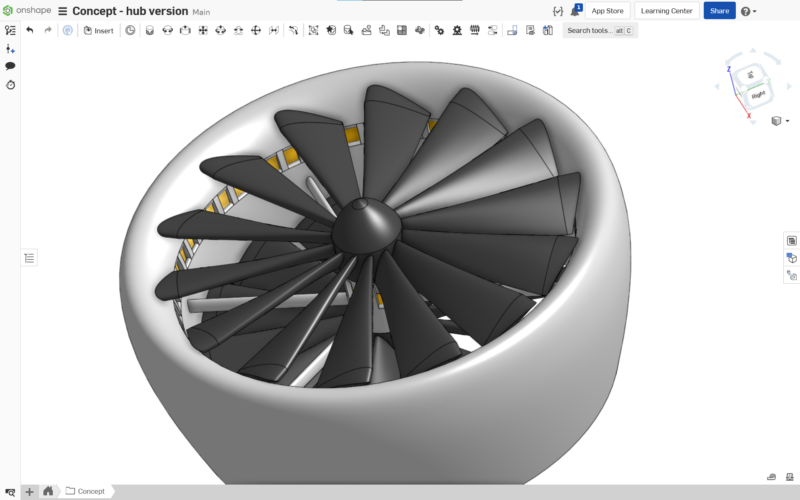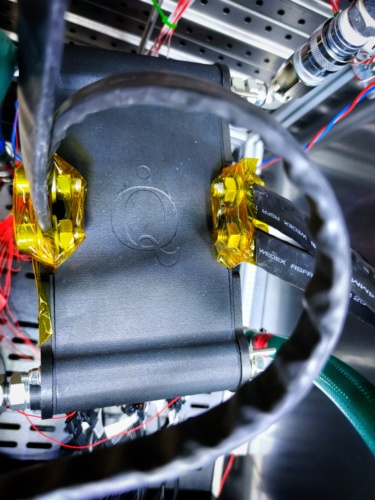PTC explains how its cloud-based CAD software is helping Oxford University spin-out Qdot Technology fast-track its journey to commercialisation.
The team at Qdot Technology like to think of themselves as “serial problem-solvers”. In keeping with that ethos, the high-performance cooling technologies developed by this Oxford University spin-out company have a wide range of potential applications.
For a start, they can be used to remove the intense heat that builds up in a tokamak, an experimental form of power plant designed to harness the energy of fusion. In fact, the Qdot team is already working with Tokamak Energy, a company currently building a fusion power plant at the Milton Park scientific hub near Oxford.

Qdot’s thermal management tech might also be put to work in electric vehicles (EVs), slashing the time it takes to charge their batteries, increasing battery performance and extending battery lifespans.
More immediately, Qdot has its sights set on the electric aircraft market. Again, the focus here is heat removal from batteries: as payloads for electric aircraft increase, current battery pack technology will be unable to meet the demands placed on it. Qdot’s thermal management technology could be key to drastically increasing power densities, without the need to alter cell chemistry.
Equipping engineers
While commercialisation of its technology may be some way off yet, Qdot has already solved one of the major problems facing any resource-constrained start-up looking to solve big engineering challenges: How can we equip our people with the CAD technology they need to design and prototype groundbreaking new products and share the details with manufacturing partners?
Green sky thinking: the rise of hydrogen flight
In Qdot’s case, the answer has come in the form of OnShape, the cloud-based software-as-a-service (SaaS) CAD product from PTC. Because it’s based in the cloud, engineers can access Onshape from anywhere, via a standard web browser. The company pays only for the number of seats it needs, on a subscription model paid for out of operational (rather than capital) expenditure. As Qdot founder and director Dr Holt Wong points out, there’s no need to invest in costly workstations for CAD work. And remote access to the cloud-based software has been a particular benefit during the period of working from home triggered by the Covid-19 pandemic.
But perhaps more importantly, it means that the collaborative work of designing battery cell modules runs smoothly. “Any of our engineers can access the latest version of the design," said Dr Wong. "They can open it, manipulate it and make edits. Then they can share those changes with the team and another engineer can review changes and provide input and approvals. It’s a team effort, but we don’t all have to be sitting in the same room.”

With the whole engineering team at Qdot (Credit: Image left) using Onshape every day, the company is now starting to explore how it can better use its version control functions. As Dr Wong observes, things get pretty complicated when multiple team members are working on multiple possible designs. Naming conventions for files can quickly fall apart if they don’t make it really clear to everyone involved what differentiates one version of a file from another.
Luckily, Onshape’s product data management (PDM) capabilities enforce version control to give everybody greater clarity as to the current status of a file. The system also tracks which files are out of date and creates audit trails of edits made to them.
“That way, we’ll get a clearer view of which parts were changed, which parts were put out to quote, which have been actually manufactured. We’ll know when a particular version has branched off in different directions and been edited. It should be a lot easier for our engineers to understand which files they should touch, which they shouldn’t, and which represent an actual product that is ready for manufacture,” Dr Wong explained.
On that last point, Onshape’s release management capabilities should also prove a big benefit as Qdot gets closer to commercialisation, he adds. These guide users through the process of finalising files for their release to manufacture.
“When you’re just doing concept work, working on potential designs, release management is not so important. But when you’re close to actually getting things made for you, you want to be 100 per cent certain that what you’ve got in a particular version is exactly what you intend to have made,” he said.
Multitasking CAD files
On its journey to commercialisation, CAD files created in Onshape are already performing several important tasks at Qdot Technology. They are regularly shared with manufacturing partners who use them to create parts and components for prototypes. They are also fed into the company’s own 3D printer, from Qidi Technology, which is used to produce some parts in-house.
In another project at Qdot, engineers are exploring the possibility of using metal binder jet printing to create high performance, lightweight and shape-conformal heat exchangers for electric aircraft - another area where accurate, detailed CAD files will be vital to getting a good end result.
Finally, Onshape’s ReviewServer rendering capabilities are used to create visualisations of CAD files. These visualisations enable Qdot’s management team to keep investors up-to-date on their progress through engaging representations of current ideas and prototypes. “Once you get the output, it looks very good,” says Dr Wong. “There’s a good selection of textures and materials and we’re looking forward to seeing faster, more integrated rendering incorporated into Onshape.”

With the aviation industry projected to account for over 22 per cent of all transport CO2 emissions by 2050, the race is now on to balance sector growth and climate targets. The electrification of flight has a vital role to play here, so the sooner it can get its thermal management technology onto the runway, the sooner Qdot can taxi for take-off.
Taking the temperature of Product Development
PTC, which helps industrial customers solve key business challenges through a combination of Augmented Reality, Industrial IoT, Product Lifecycle Management and CAD solutions, has recently worked with research firm Isurus to launch The State of Product Development and Hardware Design 2021 survey.
The report took the pulse of nearly 800 industrial professionals and covered the capabilities gap, data management challenges, the impact of the pandemic and how we manage the growing generation gap.
To read the full results, please download the report here.










Simulations show Optimal Design for Bladeless Wind Turbines
"an 80cm mast" Really? I'm short but that's only half my height! Do they mean 800cm?